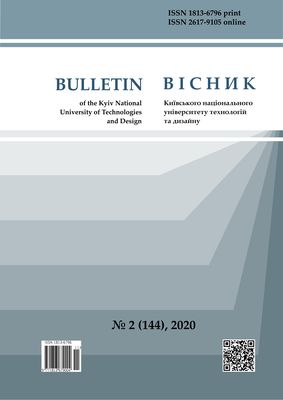SIMULATION OF THE FRICTION PROCESS IN TEXTILE MATERIALS
DOI:
https://doi.org/10.30857/1813-6796.2020.2.4Keywords:
textile materials, friction, adhesion, elastic resistance, structural parametersAbstract
Create a model for determining the coefficient of friction of textile materials to identify the main factors influencing the process of friction, taking into account the structural and mechanical properties of materials. Modeling of friction process in textile materials as a combination of adhesive and elastic phenomena. Roughness of solid bodies and the main parameters of roughness, such as the height of micro-irregularities, their pitch, sharpening, etc. described in many standards and scientific papers. However, the modeling of the friction process in such systems is very complicated due to the irregularity of distribution of microroughness. The analysis of literature data showed that the surface roughness of textile materials is an important and effective factor in predicting the tactile properties of products for various purposes. Estimation of surface roughness is usually carried out using subjective and objective methods, and the latter can be contact and non-contact. The paper develops a model for determining the coefficient of friction of textile materials to identify the main factors influencing the friction process, taking into account the structural and mechanical properties of materials. Friction force is presented as a combination of two main factors. The first is the elastic resistance to deformation, the second is the adhesive resistance to compression of the structural elements of the material. The main parameters influencing the coefficient of friction of textile fabrics - modulus of elasticity of structural elements, their geometrical parameters - surface density of textile material, linear density of structural elements are established. The obtained results allow to qualitatively predict the friction forces of a textile material with known parameters of its structural elements, as well as to normalize these parameters to create materials with specified friction indices. The obtained results make it possible to select the threads that form the textile material, according to the values of the modulus of elasticity, thickness, location density to ensure the minimum friction force.

